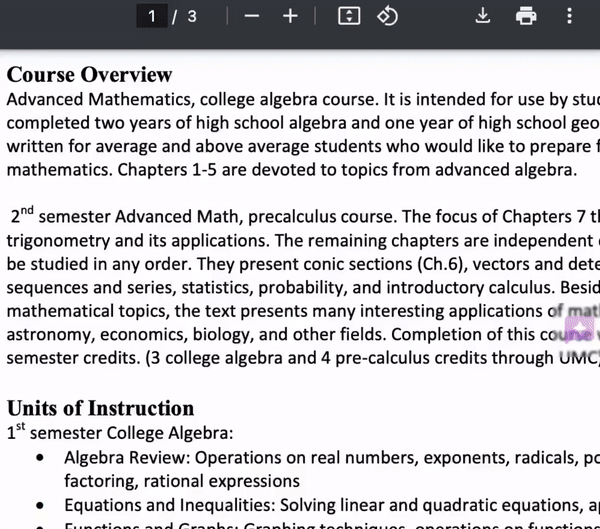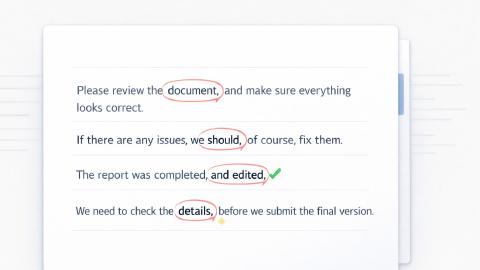How to Make Rubrics With an Free AI Rubric Generator in 2025
Use these templates and a free AI rubric generator to make rubrics for your classes in 2025.
Grading assignments can be overwhelming, especially when you have to create detailed rubrics for each task. Many teachers struggle to find the time to design rubrics that are both clear and effective.
Research shows that rubrics can improve learning and instruction if used effectively.
This is where AI tools can make a big difference. With a free AI rubric generator, you can quickly create custom rubrics tailored to your assignments.
In this guide, we'll show you how to simplify the process and save valuable time using a free AI rubric generator, so you can focus more on teaching and less grading. Let's dive in!
What is a Rubric? Rubric Definition
A rubric is a scoring guide that outlines expectations for an assignment or activity. It provides criteria for evaluating a student's work, ensuring a consistent and objective grading process.
Rubrics make expectations clear for both students and teachers, reducing confusion about performance standards.
Rubrics are typically divided into components:
- criteria
- performance levels
- descriptors
- criteria/the skills or areas being assessed
Performance levels indicate the quality of the work, such as excellent, good, or needs improvement. Descriptors explain what each performance level means for each criterion.
Types of Rubrics
Rubrics are flexible tools that can be categorized based on their purpose and use case. Choosing the right type helps streamline grading and ensures alignment with specific assignment goals.
Here are the main types of rubrics:
General Purpose Rubrics - These include templates for grading a variety of tasks, such as essays, presentations, and projects. They provide broad criteria that can be applied across different assignments.
Subject-Specific Rubrics - Tailored for particular subjects or tasks, such as AP Research, DBQ (Document-Based Questions), or LEQ (Long Essay Questions). They align with specific academic standards.
Skill-Based Rubrics - Focused on evaluating particular skills like writing, public speaking, or teamwork. Examples include essay rubrics or presentation rubrics.
Holistic and Developmental Rubrics - Assess overall performance or track student growth over time. Useful for assignments that prioritize general impressions or progress.
Teacher Evaluation Rubrics - Designed for assessing teaching practices, such as the T-TESS or Danielson rubrics. These are used in professional development and performance reviews.
These categories cover a range of rubric types, offering flexibility and precision for different grading needs.
Use AI Blaze to automate work & save time.
How to Make a Rubric
Creating an effective rubric requires careful planning and attention to detail. By breaking the process into clear steps, you can design a rubric that provides meaningful feedback and streamlines grading.
There are AI tools for educators that help automate the process and save time, but here’s how to create a rubric step by step:
Define the Purpose
Start by determining what the rubric will assess. Consider the learning objectives for the assignment and the skills or knowledge you want to evaluate.
A clear purpose ensures that the rubric aligns with the goals of the activity and focuses on the most important aspects.
Identify the Criteria
List the specific components of the assignment that you want to grade. Making the criteria clear and understandable is key.
For example, a writing rubric might include criteria such as "thesis statement," "organization," and "grammar."
Keep the criteria clear and measurable so both students and teachers understand what is being assessed.
Set Performance Levels
Decide how many levels of performance you will include, such as "excellent," "good," "fair," and "needs improvement."
Each level should represent a distinct degree of achievement. Having clear performance levels allows for consistent grading and gives students a better understanding of their performance.
Write Descriptors
For each criteria, write detailed descriptions for every performance level. This helps students know what they can do to improve.
Be specific about what is required to achieve each level, avoiding vague language. This helps students understand expectations and ensures fairness in grading.
Test the Rubric
Before using the rubric, test it on a sample assignment to see if it works as intended.
Check whether the criteria and performance levels are clear and if the rubric captures the desired outcomes. Adjust any areas that seem unclear or overly broad.
Thinking of integrating AI into your workflows? Check out this article on advantages of AI in education!
Example Grading Rubric
A rubric provides clear expectations and helps ensure consistent grading across assignments.
Here is an example of a grading rubric for a writing assignment. This template evaluates content, organization, and grammar, and it can be adapted to suit various types of assignments.
This example rubric gives teachers a foundation to assess student work effectively while providing constructive feedback.
Best Free AI Rubric Generator

If you are looking for a free AI rubric generator to make rubrics, give AI Blaze a try.
AI Blaze is the ultimate AI teaching assistant that helps you quickly generate rubrics & worksheets, create lesson plans, grade essays, provide feedback, and much more!
AI Blaze can help you grade assignments, provide detailed feedback, and even generate materials for your classes!
Here's how AI Blaze stands out:
Generate rubrics for any class - Quickly create rubrics, grade assignments, and give personalized feedback using your own criteria.
Generate worksheets & lesson plans with AI - Generate high quality worksheets and detailed lesson plans using AI.
Grade & check essays & assignments - Use AI to provide feedback and grade/check essays, papers, and assignments.
Instantly use GPT-4 on any site with keyboard shortcuts and a dynamic AI sidebar assistant!
AI Blaze is free! - Forget about annoying licenses or subscriptions.
Use AI Blaze to automate work & save time.
12 Ready-to-Use Rubric Templates
Rubric templates save time by providing ready-made frameworks for grading a variety of assignments.
Here's our list of 12 commonly used rubric templates, each tailored to specific tasks and teaching goals. Each template includes criteria and performance levels to simplify the grading process:
- Blank Rubric Template
- Grading Rubric Template
- Project Rubric Template
- Essay Rubric Template
- Presentation Rubric Template
- AP Research Rubric
- LEQ Rubric
- T-TESS Rubric
- DBQ Rubric
- Holistic Rubric
- Danielson Rubric
- SAQ Rubric
Blank Rubric Template
This template is a flexible framework that allows teachers to customize criteria and performance levels to fit any assignment.
Grading Rubric Template
This general-purpose rubric is suitable for a wide range of assignments, such as essays, presentations, and projects.
Project Rubric Template
Designed to evaluate group or individual projects, this template focuses on creativity and teamwork.
Essay Rubric Template
This template evaluates writing assignments by assessing thesis development, organization, and grammar.
Use AI Blaze to automate work & save time.
Presentation Rubric Template
This template is ideal for grading presentations, focusing on delivery and visual aids.
AP Research Rubric
This rubric is tailored for AP research projects, emphasizing research quality and data presentation.
LEQ Rubric
This rubric evaluates Long Essay Questions, focusing on argumentation and historical evidence.
T-TESS Rubric
Used for teacher evaluation, this rubric assesses planning and classroom environment.
DBQ Rubric
This rubric is designed for Document-Based Questions, focusing on analysis and historical context.
Use AI Blaze to automate work & save time.
Holistic Rubric
This rubric provides an overall score for assignments, ideal for creative or open-ended tasks.
Danielson Rubric
A rubric for evaluating teaching practices, focusing on instruction and professionalism.
SAQ Rubric
This rubric is ideal for grading Short Answer Questions (SAQs), focusing on clarity and accuracy of responses.
Use AI Blaze to Generate Rubrics for Free!
Rubrics are essential tools for effective teaching and grading. With the help of a free AI rubric generator, teachers can save time, improve consistency, and focus on delivering quality education.
Whether you’re creating rubrics from scratch or using ready-made templates, these tools simplify the process and enhance learning outcomes.
To recap, our suggestion for the best AI rubric generator is AI Blaze. AI Blaze is the ultimate AI teaching assistant that helps you generate rubrics, worksheets, lesson plans, and more using AI for free!




